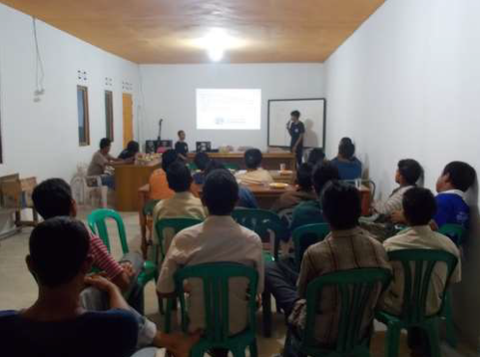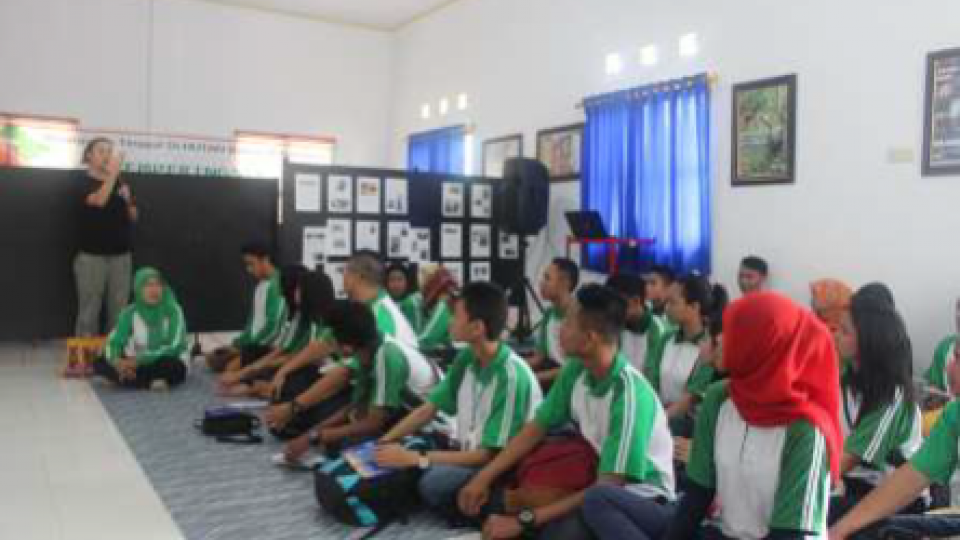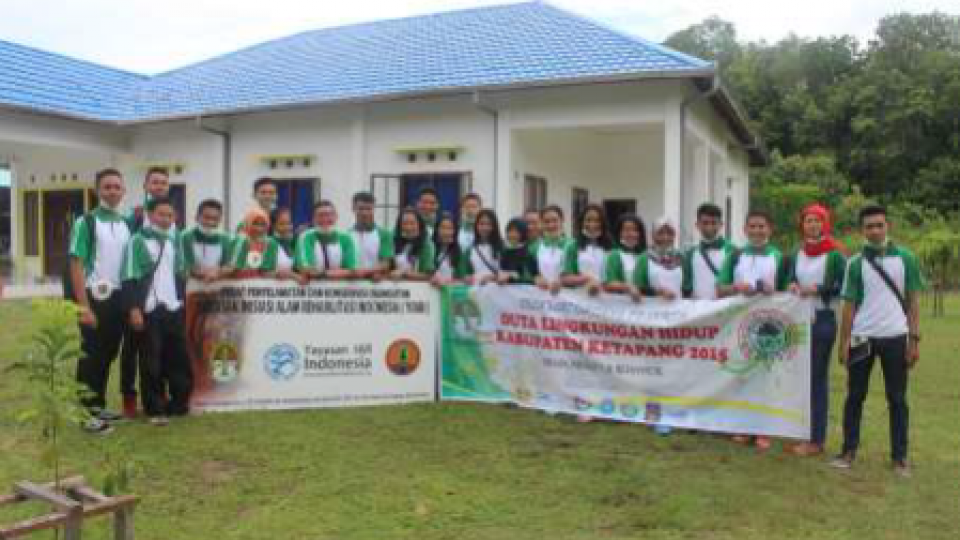
International Animal Rescue’s Outreach and Education team have recently carried out a number of activities to engage with and inspire the local community.
1) Presenting study findings back to the community
Across 2014, IAR undertook intense Human-orangutan conflict (HOC) Surveys in 20 villages and 49 sub-villages, interviewing 3,616 people. For local communities to promote its own well-being, they need to understand what they are truly facing and what they perceive to be facing (for instance HOC issues). Therefore, IAR’s HOC response team have begun revisiting surveyed villages to present findings to the communities to discuss more fully whether the results are accepted or refuted. To date in 2015, IAR have presented the survey findings in 8 out of the 20 villages. It appears that for most people seeing the problem they face on a large screen in black and white appears to make the picture clearer and easily digestible. Thus far, the team are yet to have any of the local villagers protest the results. They have been largely very supportive and even grateful that time was taken to return to their villages and share the results with them. The next steps are to keep moving forward towards shared and desired goals for all HOC communities. This exercise also aids as an evaluation tool. If any community out rightly rejects the findings then of course the team would need to understand the reason behind this and work together to correct this.

2) Hosting an event for the ‘Ambassadors for the Environment’ programme
For World Earth day on the 22nd April 2015, International Animal Rescue’s Orangutan centre opened its doors to host a collection of youth who are currently in the running to join the ‘Ambassadors for the Environment’ programme in Ketapang. The programme seeks to determine the most effective role it can play in recognizing, supporting, and encouraging youth involvement in environmental excellence. It also seeks to identify what it means to engage youth in the fields of environment and sustainability, conserving natural resources, and energy conservation, encouraging the youth to contribute to environmental and conservation outcomes in their community. It recognised that environmental sustainability has important implications for the youth as well as for the communities in which they live. Training youth to become environmental [and conservation] stewards/ambassadors is a promising approach to engaging youth in these critical issues. Therefore, IAR are proud to be part of this innovative youth programme as it creates synergies with some of our existing programs.
3) Human-Orangutan conflict (HOC) focus group discussion with woman
IAR’s Education and Outreach team have held multiple woman groups to discuss further their concerns with HOC as these are usually starkly different from the local men in the community. Many of the women stated that orangutans were dangerous. When asked to elaborate further, many were scared of orangutans because of their large body size, their ability to chase and capture humans, to bite a person, their aggressive nature, and for a variety of other reasons, such as local legends. When asked to elaborate on local legends this familiar story emerged across the villages:
‘Orangutans are very similar to us (humans) and subsequently enjoy spending time alone but also in our company. Consequently, a long time ago (no time frame was ever given) a male orangutan snatched a female farmer, ascended to the tree tops and forced copulation with her, resulting in the birth of a half human-half orangutan offspring which is restricted to life in the treetops. In the still of the night you can still hear the cries of this half human-half orangutan.’
Interestingly, in these women focus group discussions, respondents noted they felt a dilemma because of enjoying the pleasure of seeing orangutans, and hoping their grandchildren will enjoy the same experience in future, but noting this comes at the expense of their livelihood. IAR’s team have also now began focusing mainly on regular Friday social gatherings (locally know as arisan), integrating the reading of the Quran during these meeting. The Quran is the central religious text of Islam that is discussed during these Friday meetings with groups of woman and men (separately). These meetings are used as a platform to link conservation and Islam together.
4) Collaboration with the ‘Forest Guardians’ programme.

Yayasan Alam Sehat Lestari (or known locally as ASRI) formed a Forest Guardians programme in 2010. This program aims to involve the village communities directly adjacent to the Gulung Palung National Park in ASRI’s preservation activities. Forest Guardians participate in and monitor community reforestation efforts and also keep an eye out for illegal logging and unsustainable farming that destroy the forest. ASRI then uses this information to produce an incentive system where individuals from villages engaged in reforestation efforts benefit from discount healthcare at the ASRI clinic while those from villages that carry out illegal logging do not. In the coming months we will work closely with their Forest Guardians by training them in HOC verification and mitigation methods facilitating them to be our eyes and ears on the ground in the region of Kayung Utara. We have collectively pinpointed that 6 out of the 23 villages they work in are areas affected by HOC. Therefore, we will work together in reducing HOC trends in the areas whilst increasing awareness of HOC as well as conservation and environmental issues in these villages.
5) Increased activity by IAR’s Human-orangutan conflict (HOC) prevention unit.
IAR’s HOC prevention unit have now ranked up a further 167 patrols, bringing the total number of patrols to 357. Of these recent 167 patrols, 20 were to verify HOC situations which can be divided into 19 cases of cropraiding and damage by orangutans and one case of a female farmer being scared. The female farmer called the HOC prevenetion unit to her home to discuss the HOC situation that she had experienced, explaining that as she was collecting latex from her rubber farm when she came into contact with two orangutans. She immediately fled home and called the team to move the orangutan from her farmland. IAR’s team undertook successful mitigation strategies (i.e., steering the orangutans back to the nearest forest). Without these community prevention units, negative actions inflicted on orangutans at the hands of their community neighbours would indeed be a lot higher.

